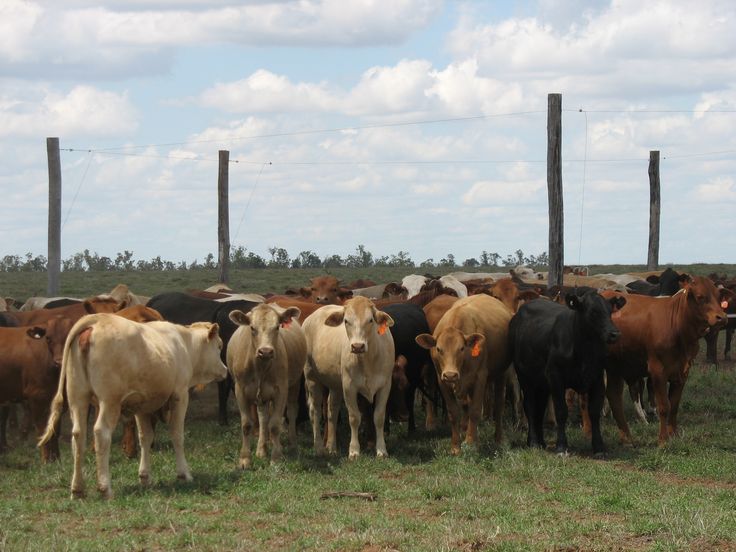Feedlot farming, also known as cattle finishing or feedlot operations, involves the intensive feeding and management of cattle to prepare them for market. Here are some key economic considerations in feedlot farming:
- Initial Investment:
Feedlot farming requires significant upfront investment in land, infrastructure, facilities, and equipment. This includes purchasing or leasing land, constructing feedlot pens, feeding equipment, water systems, and handling facilities. The initial investment costs can vary depending on the scale of the operation.

- Cattle Procurement:
Acquiring cattle for the feedlot involves purchasing or contracting with cow-calf producers or livestock auctions. The cost of cattle will depend on factors such as breed, age, weight, health, and market conditions. It is important to carefully evaluate and select cattle that have the potential to achieve desired weight gains and carcass quality.

- Feed Costs:
Feed represents the largest variable cost in feedlot farming. The cost of feed is influenced by the availability and prices of feed ingredients such as grains, forages, protein supplements, and additives. Feed costs can fluctuate depending on market conditions, weather events, and crop yields. Efficient feed management and sourcing strategies can help optimize feed costs.

- Feed Conversion Efficiency:
Feed conversion efficiency measures the amount of feed required to produce a unit of weight gain in cattle. Improving feed conversion efficiency is essential to minimize feed costs and maximize profitability. Proper nutrition, feed quality, and management practices can improve feed conversion efficiency.

- Health Management:
Disease prevention and control are crucial in feedlot farming. Investing in vaccination programs, veterinary care, and biosecurity measures can help reduce the risk of disease outbreaks and subsequent economic losses. Healthy cattle have better growth rates and feed efficiency, leading to improved profitability.

- Marketing and Price Volatility:
The profitability of feedlot farming is influenced by the prices received for finished cattle. Market conditions, consumer demand, and competition can affect cattle prices. Understanding market trends, developing marketing strategies, and timing the sale of finished cattle can help maximize profitability. Price volatility should be considered when planning and budgeting.

Besides economics of feedlot management, you should Note that our company can help you to start by giving you all the necessary information you need to get started if not yet in the business. Please check our online shop, we have all the standard business proposals for different capacities at very a cheap price made by the best agricultural specialists as well as Standard design plans that are made by the best agricultural architects around the globe. please visit our online shop now using the links below to witness by yourself
Design plans (FARM HOUSE DESIGNS – Kimd Construction & Farm Consultants)
Business plans (BUSINESS PLANS & PROPOSALS – Kimd Construction & Farm Consultants)
Welcome back from visiting our shop, hope you have placed your order for any of our products or you can place it after navigating more of our informative articles.
So let’s continue with our article!
- Operating Costs:
Feedlot operations have ongoing operating costs such as labor, utilities, maintenance, bedding materials, waste management, and insurance. Efficient management practices, proper maintenance, and cost control measures can help manage operating costs and improve profitability.

- Financial Management:
Effective financial management is essential in feedlot farming. This includes budgeting, record-keeping, monitoring costs and revenues, analyzing financial performance, and seeking professional advice when needed. Understanding the financial aspects of the business and making informed decisions can contribute to long-term success.

- Risk Management:
Feedlot farming is exposed to various risks such as changes in feed prices, cattle prices, weather conditions, disease outbreaks, and regulatory changes. Implementing risk management strategies, such as purchasing feed and cattle futures contracts, utilizing insurance programs, and diversifying revenue streams, can help mitigate risks and stabilize cash flow.

- Long-Term Planning:
Successful feedlot farming requires long-term planning and strategic decision making. This includes evaluating expansion opportunities, diversifying product offerings, adapting to market trends, and incorporating sustainability practices. Long-term planning helps ensure the viability and profitability of the feedlot operation.

It is important to note that the economics of feedlot farming can vary depending on factors such as location, scale of operation, market conditions, management practices, and input costs. It is recommended to consult with agricultural economists, financial advisors, and industry experts to develop a comprehensive understanding of the economics specific to a feedlot farming operation.
Sharing is Caring!




